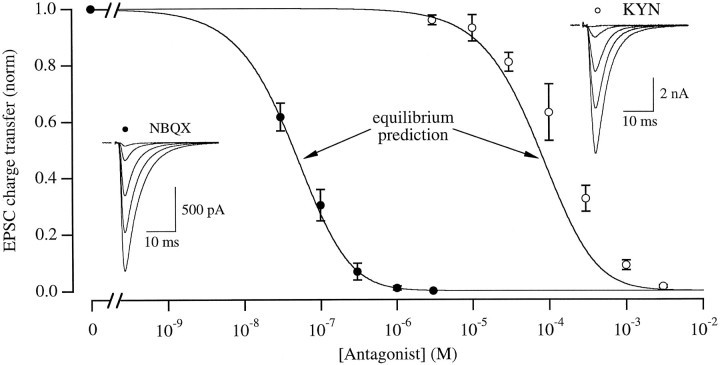Fig. 4.
KYN, but not NBQX, is replaced by glutamate during a synaptic response. Solid lines indicate the expected block of the EPSC without antagonist unbinding, according to the assumptions described in the text. Circles indicate normalized EPSC charge transfer recorded in different concentrations of NBQX (filled circles; n = 11) or KYN (open circles; n = 10; only four different KYN concentrations were tested in any one cell). Synaptic currents were integrated to determine the charge transfer and normalized to the response in the absence of antagonist. Similar results were obtained by measuring EPSC amplitude directly. EPSCs were recorded under conditions of low release probability (1 mmCa/1 mm Mg or 3 mm Ca/1 mm Mg/5 μm Cd; no differences, other than peak amplitude, were observed between these two conditions) to reduce the possibility of multivesicular release (Tong and Jahr, 1994a). Left inset, EPSCs recorded in the presence of 0, 30, 100, 300, and 1000 nm NBQX. Right inset, EPSCs recorded from a different cell in the presence of 0, 100, 200, 1000, and 3000 μm KYN.

